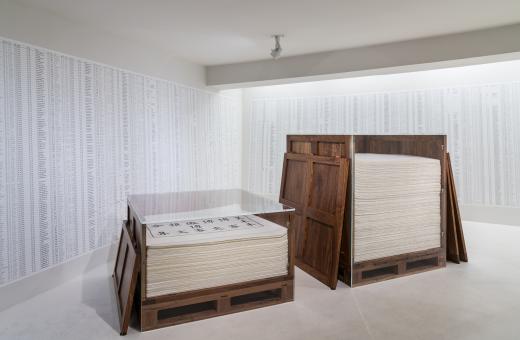WHOSE UTOPIA: ACTIVISM AND ALTERNATIVES CIRCA 2008
GALLERIES 202 AND 203
In July 2001 Beijing won its bid to host the Olympics. In November of that year China was accepted into the World Trade Organization. The international validation conferred by these two events sparked a sense of anticipation that intensified as countdown clocks across China ticked down to the Opening Ceremony: at 8 p.m. on August 8, 2008, China took its place as a global power. But for many artists, Beijing’s spectacular pageant failed to rouse the expectedtriumphalism. Rather, what developed in 2008—the year that also saw the tragic Sichuan earthquake in May and the global financial collapse in October—was a concerted social activism born of an urgent need to change the course of events. Against this backdrop, several multiyear communal projects led by artists, critics, curators, and activists emerged around the country, ranging from Ai Weiwei’s political mobilization to Ou Ning’s rural reconstruction project.
Skeptical of the party-state’s Olympic motto, “One World, One Dream,” the artists and collectives in this section created their own asylums, sanctuaries, and laboratories, seeking to effect social change through direct action in virtual and real communities. They were at the crest of a broad international current of artist-activists pushing for participatory, socially engaged practices—something beyond the white-cube gallery. The common medium was now the Internet, which provided both a social-network infrastructure, as in the Shanghai Contemporary Art Archive Project, and an alternative social reality, as in Cao Fei’s RMB City. These artists have been similarly engaged in constructing worlds outside the limitations of artistic space, shaping individual lives, and overcoming if not overturning endemic problems. They seek to change real-world conditions through the power of imagination and truth.



